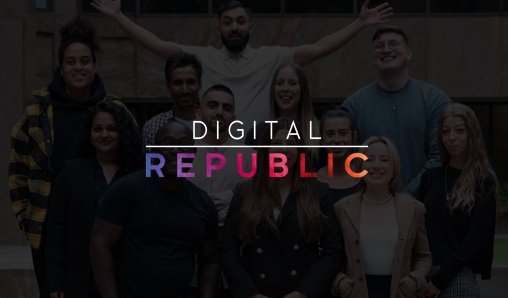
Digital Transformation is Messy, Dirty and Ugly. Embrace it!
Gartner recently published a report titled “CIO Agenda 2019: Exploit Transformational Technologies” that states the following:
“Whether it’s AI, quantum computing or conversational platforms, digital business is underpinned by technology. But with a seemingly endless amount of technologies to invest in, where are CIOs focused?”
Figure 1: Gartner: AI Tops the List of Game-Changing Technologies
(see Figure 1 here: https://st1.ning.com/topology/rest/1.0/file/get/357734834?profile=original)
Here’s the problem with this list: the important question is not where CIOs are focused. The real important question is where are CEOs focused?
Here’s the problem with the Digital Business or more importantly, the Digital Transformation voyage: it’s messy, it’s ugly, it’s confusing and it’s hard. Digital Transformation is anything but clean or fun because:
- It’s poorly defined and understood.
- It’s hard to know where and how to start as it requires reframing the organization’s charter and value creation processes.
- It’s hard to align the all-important business stakeholders because they fear it’s yet again another IT “technology-in-search-of-a-problem” initiative.
- It lacks relevant benchmarks or guidelines to guide organizations, especially for organizations that are not “Born Digital” like Google or Amazon or Netflix.
- It requires business stakeholders to invest the time and effort to understand and quantify the economic value of data.
- It’s all about analytics mastery – and not just the traditional descriptive analytics that report on or monitor what happened.
- It’s about creating a culture of exploration, discovery and… learning through failure.
Digital Transformation is hard because it is all about business models, not technologies.
Digital Transformation Foundation
Digital Transformation is more than just Digitalization, which is the integration of digital technologies such as cloud-native apps and mobile devices into existing business and operational processes. Digitalization enhances or replaces human-centric process with digital technologies, such as transmitting meter readings to the cloud using sensors on a more granular basis versus having human meter readers travel to the meter to get the reading every couple of weeks (see Figure 2)
Figure 2: Digital Transformation of Business Model versus Digitalization of Existing Processes
(see Figure 2 here: https://storage.ning.com/topology/rest/1.0/file/get/357737515?profile=original)
Digital Transformation, on the other hand, is much harder, more messy and many times more valuable. Digital Transformationleverages the economics of big data, IOT and advanced analytics/data science to re-engineer the organization’s business models to create new sources of value based upon customer, product, operational and market insights. Digital transformation is less about technologies and more about economics, where economics is the discipline of wealth or value creation.
Starting with the 6 Laws of Digital Transformation
As we covered in the “6 Laws of Digital Transformation”, Digital Transformation is more than just automating existing business and operational processes, which can easily lead to “paving the cow path” by applying digital technologies to make traditional but irrelevant processes more effective. That’s like making your fax machine more efficient!
We created these “6 Laws of Digital Transformation” to highlight the transformational power of the Digital Business Model Transformation journey:
- Law #1: It’s About Business Models, Not Just the Business. Digital Transformation is about innovating business models, not just optimizing existing business processes.
- Law #2: It’s About Eliminating Barriers Associated with Time and Distance. Digital Transformation is about coupling digital technologies with digital assets in order to eliminate time and distance barriers in your business model.
- Law #3: It’s About Creating New Digital Assets. Digital Transformation is about creating new digital assets (data, analytics, and insights about customers, product, operations and markets) that can be used to re-engineer your business model.
- Law #4: It’s About Predictive Intelligence. Digital Transformation is about predicting what’s likely to happen, prescribing actions, learning from the results and integrating those learnings faster than your competition into your business model.
- Law #5: It’s About Creating More Compelling, Differentiated Customer Experience. Digital Transformation is about the creation of “intelligent” applications and “smart spaces” that not only deliver a more compelling user experience, but learn from each user engagement to make your business model more relevant and differentiated.
- Law #6: It’s About Monetizing the Pain. Digital Transformation is about identifying, quantifying and eliminating the inhibitors to customer and market value creation, and re-engineering your business model to monetize those customer and market value creation inhibitors.
Digital Transformation Roadmap
We now need to create a roadmap for how an organization can apply these 6 laws to digital transformation their business models. I created the Big Data Business Model Maturity Index (BDBM) to help organizations understand where they sit versus best-in-industry with respect to how effective they are at leveraging data and analytics to power their business models. Over the past couple of years, I’ve realized that the last phase of the Big Data Business Model Maturity is Digital Transformation, or more accurately, Digital “Business Model” Transformation (see Figure 2).
Figure 3: Big Data Business Model Maturity Index
(see Figure 3 here: https://st2.ning.com/topology/rest/1.0/file/get/357740614?profile=original)
The Digital Transformationstage is where organizations “create a collaborative value creation culture that embraces analytics as a business discipline to accelerate digital business transformation” and builds upon the big data, IoT and advanced analytics/data science work done in the prior stages (see Figure 4 for a more detailed explanation of each of the BDBM stages).
Figure 4: Stages of the Big Data Business Model Maturity Index
(see Figure 4 here: https://st1.ning.com/topology/rest/1.0/file/get/357745091?profile=original)
Another important role of the Big Data Business Model Maturity Index is to provide a roadmap to help organizations navigate the index in order to become more effective at leveraging data and analytics to power their business models. This is especially critical as organizations seek to blend Design Thinking with Data Science to accelerate their ability to extract and monetize customer, product and operational insights out of the data and support the cultural change to successfully navigate the index (see Figure 5).
Figure 5: Big Data Business Model Maturity Index Roadmap
(see Figure 5 here: https://st1.ning.com/topology/rest/1.0/file/get/357745091?profile=original)
There will be more to follow in future blogs about the Digital Transformation Roadmap (I need to leave some suspense…sort of like waiting for the Marvel’s Avenger’s “End Game” movie to see how the universe rights itself).
Digital Transformation Journey Summary
Let me leave you with this final graphic that shows how the different capabilities of data science, design thinking, co-creation, cultural change and business model re-engineering need to collide in order for an organization to successfully achieve Digital Business Model Transformation. Figure 6 shows all the different disciplines that need to come together to pull off a successful Digital Transformation.
Figure 6: Collision of Disciplines to Support Digital “Business Model” Transformation
(see Figure 6 here: https://storage.ning.com/topology/rest/1.0/file/get/357747615?profile=original)
Digital Transformation is messy, ugly, get your hands dirty, yell-and-scream-at-each-other frustrating, hard, aggravating…and worth every bit of the pain! I hope you can channel your inner Doctor Strange.
Originally posted by Bill Schmarzo.
If you liked reading this article, you might find this post interesting as well.




